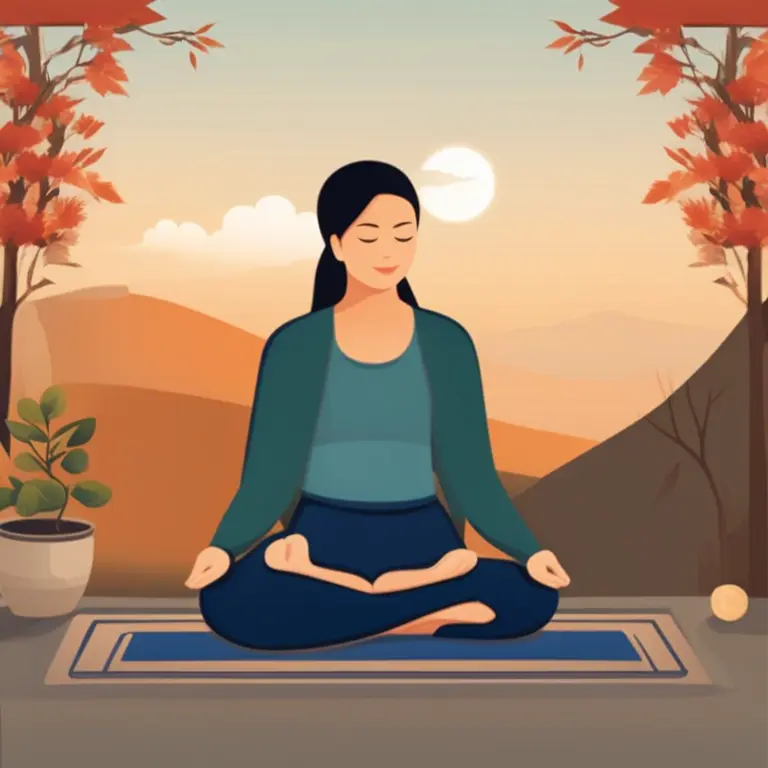
Diverse Meditation Practices to Transform Your Mind
Explore various meditation techniques to enhance mindfulness, focus, and spiritual well-being in this concise guide to transforming your inner landscape.
article by Hina Kurosawa
Introduction to Meditation
Meditation has long been a cornerstone of self-improvement and spiritual practices worldwide. This ancient tradition offers a way to cultivate mindfulness, ease stress, and develop a deeper connection with oneself. In our fast-paced modern world, where distractions are omnipresent, the art of meditation is more relevant than ever. Meditation can come in many forms, and finding the technique that resonates with you is crucial for building a sustainable practice. Here, we delve into the richness of meditation, uncovering several methods that are widely embraced for their transformative potential.

Focus-Based Meditation Techniques
One of the fundamental categories of meditation involves concentration or focus-based techniques. These methods are characterized by the practitioner's attention being anchored to a specific object, thought, or activity. Examples include Samatha, Trataka, and some forms of Zen meditation. In Samatha, the focus is often a mantra or the breath, while Trataka involves steady gazing at a single point—such as a candle flame. These practices train the mind to improve focus, discipline, and tranquilize mental activity, making them ideal for beginners looking for clarity and calmness.

Mindfulness Meditation
Mindfulness meditation emphasizes being present and fully engaging with the here and now. This technique encourages acute awareness of physical sensations, emotions, and thoughts without judgment or attachment. The practice has its roots in Buddhist traditions but has gained massive popularity in the West through programs like Mindfulness-Based Stress Reduction (MBSR) and apps to aid practice. The simplicity of mindfulness meditation makes it accessible and beneficial for those looking to reduce anxiety, and improve emotional balance and cognitive function.

Body-Scan Meditation
Closely related to mindfulness is the body-scan meditation, a technique that entails paying detailed attention to different parts of the body. Practitioners typically start at the feet and gradually move upwards, noticing sensations, tightness, or discomfort. The body scan provides a way to connect with the physical self and can serve as a relaxation method before sleep. It is also instrumental in recognizing the interconnectedness of the mind and body, thus fostering holistic well-being.

Transcendental Meditation
Transcendental Meditation (TM) is a trademarked meditation procedure developed by Maharishi Mahesh Yogi. It involves silently repeating a personal mantra, which helps the practitioner to retreat from external thoughts and enter a state of profound rest. The practice is typically taught by certified instructors and claims several benefits, including reduced stress and improved brain function. While TM requires a course for learning, many find its structured nature and supportive community valuable.
Heart Rhythm Meditation
Heart Rhythm Meditation focuses on the physical heart and breathing patterns to influence consciousness. This technique emphasizes synchronous breathing with the heartbeat to create a harmonious bodily rhythm. The heart is both a physical organ and a symbol of love and connection, making this practice particularly suited for those seeking emotional healing and expanded compassion.
Moving Meditations: Tai Chi and Qigong
For those who find stillness challenging, moving meditation like Tai Chi or Qigong can be the perfect alternative. These meditative practices, rooted in martial arts, emphasize flow, balance, and centeredness through gentle, deliberate movements. They are widely recognized for promoting vitality, flexibility, and a serene mind, and are especially beneficial as one ages.
Visualization and Guided Imagery
A more creative form of meditation involves the use of visualization and guided imagery. In these practices, participants are taken on a mental journey through descriptive language and prompts—often led by an instructor or audio recording. This form of meditation is effective for those seeking personal insight, enhanced creativity, and emotional release. It can be particularly useful for visual learners and individuals pursuing therapeutic or artistic growth.
Choosing the Right Technique
With so many meditation techniques available, it may seem daunting to choose the one that best fits your needs. Consider starting with simpler practices like mindfulness or focus-based techniques before experimenting with more complex or movement-oriented meditations. It's also valuable to note that mixing different methods over time can offer a more robust and adaptable meditation practice. Ultimately, the right technique is one that feels comfortable, brings joy, and contributes to your overall well-being.
Published: 1/18/2024
Modified: 1/18/2024
More predictions
Come back here soon to learn more about yourself and your future


The Science View: Meditation & Brain Health
Delve into the science of how regular meditation practices can influence and improve brain function and overall mental health.


The World of Meditation: A Peaceful Journey
Delve into the serene world of meditation with this comprehensive guide that illuminates its purpose, practice, and profound benefits.